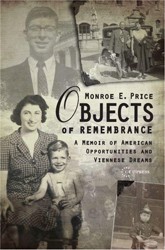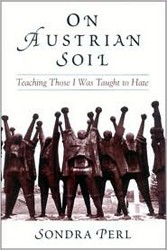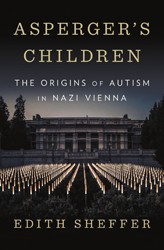By
– November 29, 2011
Few people have heard of the Gallia family of fin de siècle Vienna, but few will forget their extraordinary story after reading Good Living Street, a richly detailed portrait of a prominent Jewish family living in Austria during a time of Jewish assimilation and affluence, in a contradictory world of rising anti-Semitism. This book gives intimate details of the daily life of a patron family played out against the larger backdrop of history during one of the most devastating periods in Jewish history.
Mr. Bonyhandy, the son of one of the few survivors of the Gallia family, begins with the history of his family’s patriarch, Moriz Gallia, a successful businessman. Like other Jews of Central Europe, who found economic opportunity in the large cities, he came to Vienna to pursue his various and growing business interests. His marriage to Hermine Hamburger produced four children, and Good Living Street focuses primarily on the story of their daughter Gretl and her daughter, Anne, the mother of the author.
The Gallias were like many other successful middle class Jews, who remained part of the larger Jewish community but converted to Christianity in an effort to fully assimilate into the larger European culture. Some of their children did receive instruction in Jewish life, but largely led a secular Christian life, celebrating Christmas and Easter while ignoring Jewish life and rituals. Many chose atheism over any religion. But none of this would matter when the Nazis came to power. The Gallias found that for all their efforts they were considered racially Jewish and had their money and possessions taken from them, while they were shipped to concentration camps. Gretl, her daughter, and two of her siblings and their families were able to escape to Australia with many of their possessions.
This is also a story of the Secessionist art movement in the early twentieth century and the accumulation of great works of art by affluent Jewish families. Much of this property was confiscated by the Nazis but the Gallia family managed to save much and transport it with them to Australia, including the famous Gustav Klimt portrait of Hermine Gallia that now hangs in the National Gallery in London. This book will give the reader a personal account of history during one of its darkest moments and the impact it had upon the survival of one very interesting family.
Mr. Bonyhandy, the son of one of the few survivors of the Gallia family, begins with the history of his family’s patriarch, Moriz Gallia, a successful businessman. Like other Jews of Central Europe, who found economic opportunity in the large cities, he came to Vienna to pursue his various and growing business interests. His marriage to Hermine Hamburger produced four children, and Good Living Street focuses primarily on the story of their daughter Gretl and her daughter, Anne, the mother of the author.
The Gallias were like many other successful middle class Jews, who remained part of the larger Jewish community but converted to Christianity in an effort to fully assimilate into the larger European culture. Some of their children did receive instruction in Jewish life, but largely led a secular Christian life, celebrating Christmas and Easter while ignoring Jewish life and rituals. Many chose atheism over any religion. But none of this would matter when the Nazis came to power. The Gallias found that for all their efforts they were considered racially Jewish and had their money and possessions taken from them, while they were shipped to concentration camps. Gretl, her daughter, and two of her siblings and their families were able to escape to Australia with many of their possessions.
This is also a story of the Secessionist art movement in the early twentieth century and the accumulation of great works of art by affluent Jewish families. Much of this property was confiscated by the Nazis but the Gallia family managed to save much and transport it with them to Australia, including the famous Gustav Klimt portrait of Hermine Gallia that now hangs in the National Gallery in London. This book will give the reader a personal account of history during one of its darkest moments and the impact it had upon the survival of one very interesting family.
Barbara Andrews holds a Masters in Jewish Studies from the University of Chicago, has been an adult Jewish education instructor, and works in the corporate world as a professional adult educator.




